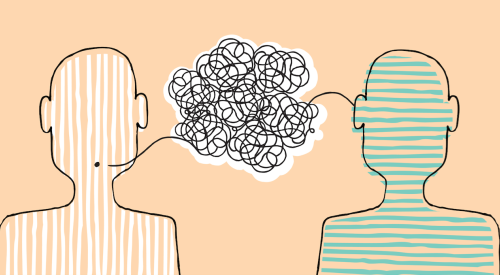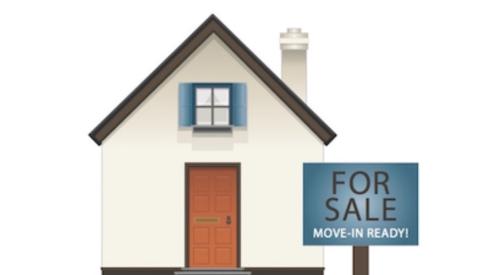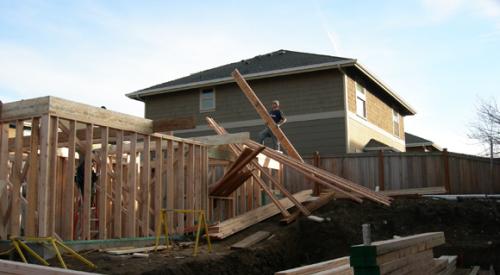Walking through the grocery store, Norm Harbinger, a builder, heard two women talking. "I have to admit, after all the horror stories I'd heard about getting financing, it was a lot easier than I expected," said one woman, placing tomatoes into a plastic bag. "But it's taking weeks longer than they said it would to finish the house. Talk about a headache. We have our furniture stored, and we're staying with Dan's parents."
The State of New-Homebuyer Customer Satisfaction
Once again it's time for our annual look at the overall state of new-home buyer customer satisfaction. This measure gives us the chance to view how well the industry takes care of its customers year-by-year. But remember, general trends don't tell you how well your company is doing. Do you have a successful system to determine how your customers feel other than sending your staff to grocery stores and little league ball games? Having an effective customer satisfaction gauge is one of the most potent ways for a business (especially a home builder) to objectively identify their current reality, strengths, and improvement opportunities.
The Study
The facts in satisFACTion
- The mortgage, appraisal, and closing experience is improving.
- On-time delivery, completeness, workmanship, and cleanliness are getting worse.
- Builders with proactive communication ratings had higher customer satisfaction than reactive builders.
- Customers are using their builder's website more before, during, and after the sale, while the superintendent and salesperson communication ratings are declining.
- Only 12 percent of new-home buyers indicated they used a social media site as part of their purchase decision, while 30 percent of new-homebuyers indicated that a family member or friend referred them to their builder.
- Customers asked for anonymity 45 percent of the time as their preferred way to provide their builder feedback (good or bad).
- Studies show that customer satisfaction ratings, when done properly, are a good predictor of current and future home builder performance, profitability, and referral sales.
- So what are today's customers saying about home building? This article looks at home builders' customer satisfaction ratings from 2011 versus 2013.
Top-five improved customer ratings
- Mortgage processing and lender communications
- The closing/appraisal process
- Referral sales via family or friends
- Usage of the home builder website
- Customer?s desire to remain anonymous on surveys
Bottom-five declining customer ratings
- On-time delivery
- Home readiness (cleanliness and completeness at delivery)
- Follow-up on incomplete items
- Superintendent communications (especially regarding schedule communications)
- Sales communications and connectivity
SOS: for the Better
The worst days for mortgage approval and closing have passed. Customer ratings for that process have returned to normal. The mortgage and closing experience (especially if a home builder had preferred lenders) accounted for three of the five most-improved customer ratings. Those areas included fewer mortgage-related pains, fewer appraisal issues, and smoother closings. The top non-mortgage/closing-related areas of improvement were higher referral sales and increased usage of home builder websites as a source of pre-sale, in-process, and post-closing connectivity.
Two other categories did not make the top five but were interesting nonetheless. More customers wished to remain anonymous in their survey feedback than ever before, regardless if their feedback was positive or negative. Home buyers also indicated that while social media were somewhat important in their purchase decision, fewer than one-in-eight said they actually used a social media site. We think this outcome occurred because homebuyers interpreted "social media" to be the social reputation of a builder rather than actual social media sites such as Facebook and Pinterest. We believe little has changed regarding buyer behavior as they still research and value word-of-mouth from family and friends more so than comments made by strangers on social media outlets.
SOS: for the Worse
Clearly, home building activity has drastically improved over the past 18 months. In a January 2013 study, we found that our average home builder client's closing was up 47 percent year-over-year and year-over-year backlog increased 67 percent. This jump in volume was not matched with additions of personnel and trade resource to meet customer expectations. The increase volume not only gobbled up the staff and trade partners' excess capacity, but it overwhelmed them.
As a result, homes were delivered late. Even worse, these homes were not delivered as clean or complete as customers expected. Aggravating the situation, these shorthanded builders and trade partners chose to continue to build new houses rather than service the recently delivered products. Thus, too many customers experience the dreaded triple treat or the perfect storm.
Antidote for Customer Satisfaction Slippage: the Three Cs
The antidote for customer satisfaction slippage is the three Cs: communicate, communicate, and communicate. Our studies show that customers want proactive communications about their home construction—in fact, they want 60 percent of the communications to be initiated by their home builder. This expectation can easily be fulfilled with weekly home-status update calls from the salesperson, superintendent, or an office staff person. The problems arise when customers have to call or initiate the communication (i.e., "When is my home going to start?" "We found a broken window while visiting the job site last week," and "When is someone going to install our escrowed landscape?"). Another example of the power of communication is that we have found builders can deliver a home late by one, two, or even three months, so long as they are making regular proactive calls about the schedule and anticipated completion date.
You see, home buyers are extremely forgiving if proactively kept informed of progress and problems, but they turn into buyers from hell and pseudo project managers in the absence of communications. As we teach all our clients, communication comes from the Latin word for communicare, meaning that if you are perceived as not communicating, you are also viewed as not caring. This communicare lesson is true in all walks of life, not just home building.
What do we see for 2014? We, along most national economists, believe the housing recovery is in the initial stages. A smart builder will focus on both increasing production capacity and communication capacity. Included in production capacity is having sufficient boots on the ground to be effective (the days of having a superintendent covering 10 communities 25-miles apart are fading), make sure the home building process includes ample proactive customer communication (i.e., weekly status updates/check-in calls, pre-construction meetings, pre-drywall meetings, ample closing notice, and at least three follow-up calls in the first six weeks post-closing.) Eradicate the notion that calling the customer is an annoyance. It isn?t. There is no such thing as overcommunicating.
And equally important, choose effective communication over efficient communication. While emails and customer Web portals are efficient, they are less effective than personal communication. Ninety-nine percent of your customers did not buy their home from your portal. They bought it from your people. Keep that relationship intact for the sake of all.













